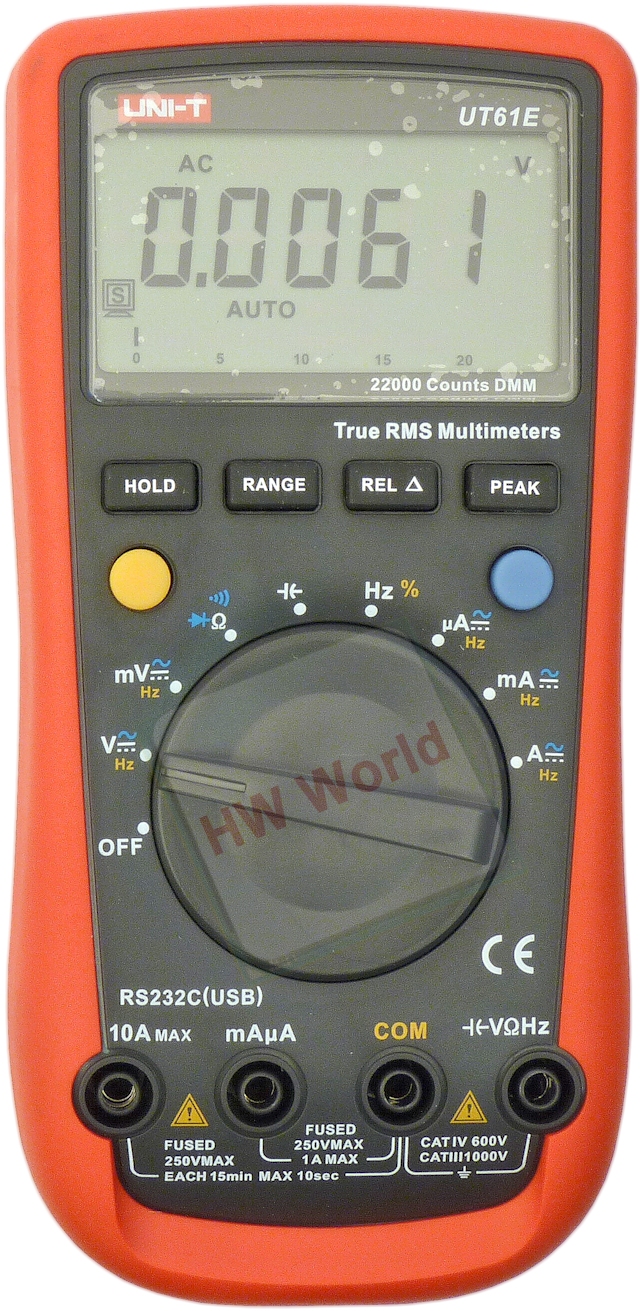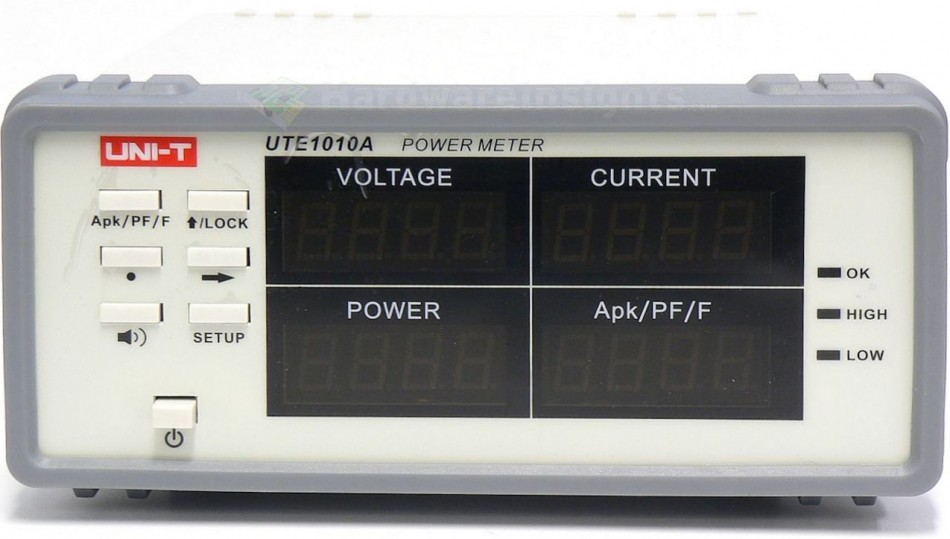Contents
- 1Power supply testing instruments and methodology introduction
- 1.1History
- 1.2The Load Tester
- 1.3Power interrupter
- 1.4Future possible upgrades
- 2Other equipment
- 2.1Isolation transformer
- 2.2Anechoic chamber
- 3Measuring instruments (electrical values)
- 4Measuring instruments (non-electrical values)
- 4.1Measuring methodology/procedure
Measuring instruments (electrical values)
UNI-T UT61E digital multimeter
- Used for measuring the voltage, since version 1.2 the voltage is measured directly on Main ATX connector, where we get higher voltage drops due to the losses on the wires (which will lower the measured efficiency, however we get voltage which is really available for us, not connector idle-voltage)
- accuracy of ±0.1 % from measured voltage and ±2 digits (lowest position of the display, for our range it is ±0.002 V)
UNI-T UT210E clamp meter
- Used for measuring output currents
- Accuracy of ±2 % and ± 3 to 8 digits, better ranges (2 A / 20 A / 100 A) than previous UT203
- I try to wind smaller wires multiple times over the clamp (if possible) to measure higher currents (as this is more accurate)
UNI-T UTE1010A power meter
- Used to measure input power and power factor
- Resolution of 1 W (1000+ W) to 0.01 W (10.00 W) or 0.001 for PF
- Accuracy of ± 0.4 % of the measured value + 0.1 % of the range +1 digit
Rigol DS2072 oscilloscope
- Used for ripple and hold-up time measuring using passive probes
- Range up to 70 MHz (20MHz limiter used)
- Real speed of 2 GSa/s, 50000 wfms/s, 14Mpts memory





